Most people push through Bulgarian split squats thinking they have no choice.
They want the muscle and strength gains, so they grind through the discomfort—even when the exercise feels awkward, clumsy, or outright painful.
You don’t need to suffer through Bulgarian split squats to build strong, balanced legs, though.
In this article, you’ll find the seven best Bulgarian split squat alternatives—exercises that train the same muscles just as effectively, without leaving you questioning your life choices halfway through a set.
Want to know exactly how you should train to reach your fitness goals? Take our free 60-second training quiz and find out now.
Key Takeaways
- The Bulgarian split squat is a highly effective lower-body exercise, but it’s also one of the hardest to perform due to its steep balance, coordination, and flexibility demands. If it feels awkward or painful, you’re not stuck with it.
- A good Bulgarian split squat alternative should train your lower body one leg at a time, while being easier to balance and simpler to set up.
- The split squat, forward, reverse, and walking lunge, step-up, curtsy lunge, and single-leg box squat are all effective Bulgarian split squat alternatives that train the same muscles to a similar degree.
- Before ditching the Bulgarian split squat, it’s worth checking your form and setup. Small tweaks—like adjusting your torso angle or keeping your weight over your front foot—can often fix the problem and make the exercise feel much more manageable.
- The Bulgarian split squat and its alternatives are highly effective but taxing. To get the most out of these exercises, consider using a high-quality protein powder to help you reach your daily protein target, creatine to support recovery and muscle growth, and a pre-workout to enhance energy, focus, and performance.
Why Choose a Bulgarian Split Squat Alternative?
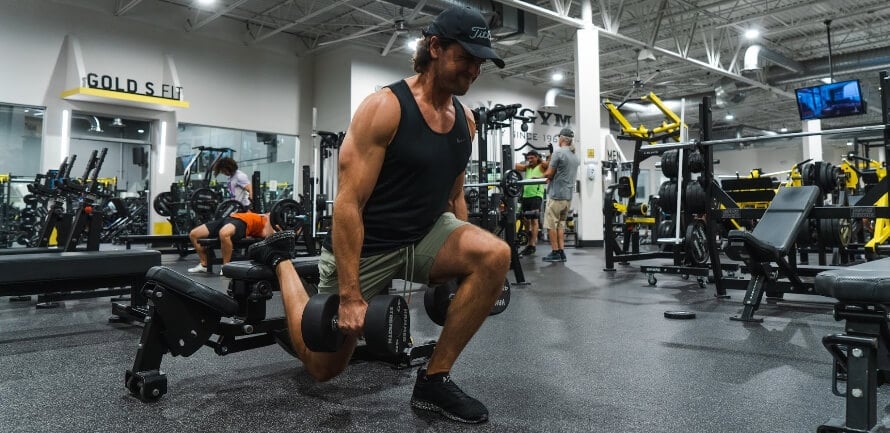
The Bulgarian split squat is one of the most effective lower-body exercises you can do. But it’s also one of the most brutal.
As well as hammering your quads and glutes one leg at a time, it can be tricky to set up, and it taxes your balance, coordination, flexibility, grip, core, upper and lower back, and more. And once you’ve finished a set on one leg, you still have to do it all again on the other before you can take a breather.
That’s what makes it such a valuable exercise—but also why so many people dread it.
It’s also why some look for an alternative to the Bulgarian split squat—something that feels less punishing, but still trains your lower body effectively.
What Makes a Good Bulgarian Split Squat Alternative?
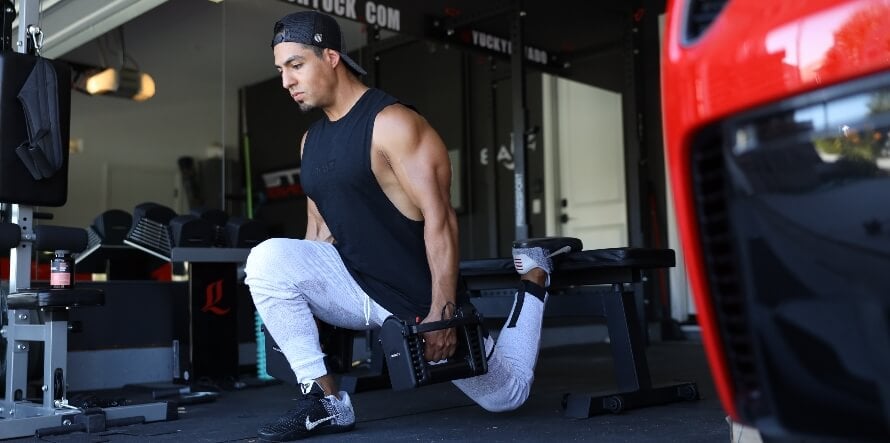
To find a good Bulgarian split squat alternative, you first need to understand what makes the exercise so effective.
- It trains your entire lower body—especially your quads and glutes—as well as several major and minor muscle groups throughout your body.
- It works one side of your body at a time, which helps you find and fix muscle imbalances, build a stronger mind-muscle connection with the target muscles, and may even improve athletic performance more than exercises that train both sides simultaneously.
- It’s adaptable—you can do it almost anywhere with dumbbells, a barbell, or just body weight.
- Because you don’t need to lift heavy weights to make it effective, it’s often easier on your joints than other free-weight leg exercises.
A good Bulgarian split squat alternative should check all the same boxes.
But a great alternative to the Bulgarian split squat also fixes the parts that can make the exercise frustrating—like the awkward setup, the balance component, and the flexibility required.
The 7 Best Bulgarian Split Squat Alternatives
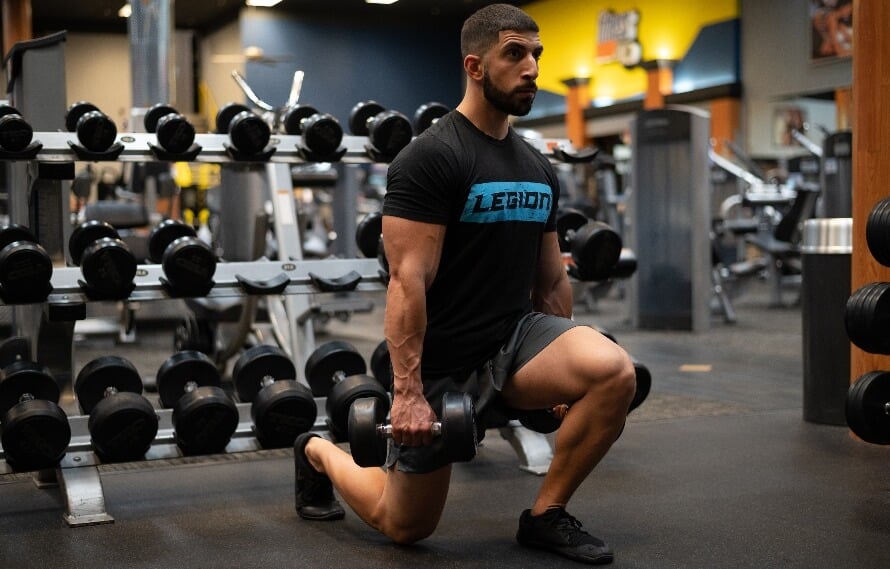
If you want the muscle-building benefits of the Bulgarian split squat without the downsides, these Bulgarian split squat alternatives are your best bet. Each one trains the same muscles to a similar degree and can help you build strong, balanced legs—minus the frustration.
1. Split Squat
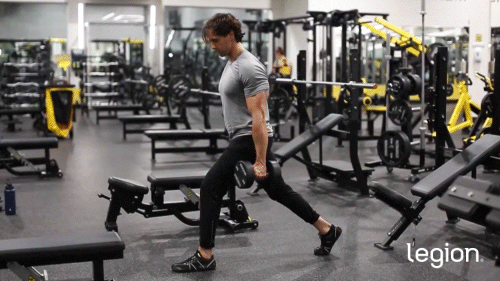
Why: The only difference between the regular and Bulgarian split squat is that the regular version keeps your back foot on the floor. That small change makes it easier to balance and less demanding on your flexibility.
The trade-off is that the regular split squat has a slightly shorter range of motion, which may make it slightly less effective for building muscle.
How to:
- Holding a dumbbell in each hand, stand with your feet about shoulder-width apart.
- Take a long step forward with your right foot—about 2-to-3 feet. Keeping your weight on your front foot, bend both knees until your left knee touches the floor.
- Reverse the motion by pushing through your right heel to straighten your legs and return to the starting position.
- Once you’ve performed the desired number of reps, switch legs and repeat the process.
Expert Tip: To emphasize your quads, drive your front knee over your toes as you descend. To train your glutes more, keep your front shin vertical and lean your torso slightly over your front leg.
READ MORE: Dumbbell Split Squat: Form, Benefits, & Muscles Worked
2. Forward Lunge
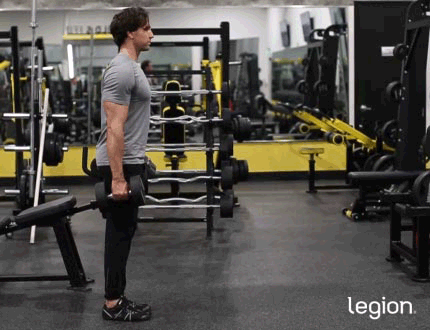
Why: The forward lunge trains all your lower-body muscles one leg at a time, making it an effective Bulgarian split squat alternative. It’s also a more dynamic movement, which many people find more intuitive—especially if they struggle to balance during exercises where their feet stay planted.
How to:
- Hold a dumbbell in each hand and stand with feet hip-width apart.
- Take a long step forward with your right foot, about 2-to-3 feet.
- With most of your weight on your right leg, lower your body until your left knee touches the floor.
- Push off the floor with your right foot and lean slightly back, straightening your legs.
- Once standing, bring your right foot back to the starting position.
Expert Tip: Don’t let your front knee collapse inward as you lunge. Keep it tracking over your toes to avoid stressing your knee joint.
READ MORE: How to Lunge: Form, Benefits, and Variations
3. Reverse Lunge
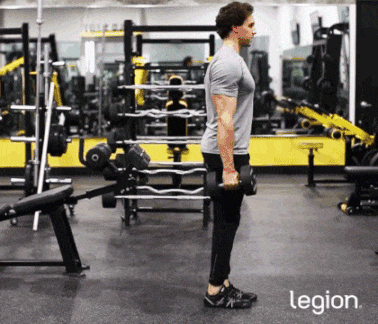
Why: Like the Bulgarian split squat, the reverse lunge trains your lower body one leg at a time. But because you step backward, it shifts more of the work onto your glutes—making it an excellent Bulgarian split squat alternative for glute growth.
The only potential downside is that stepping backward can feel awkward at first, though most people adjust after a few sessions.
How to:
- Holding a dumbbell in each hand, stand up straight with both feet about hip-width apart.
- Step back about two-to-three feet with your left leg, placing most of your weight on your right foot.
- Lower your body by bending both knees until your left knee touches the floor.
- Push off the floor with your right foot and lean slightly backward, allowing your legs to straighten.
- Once you’re standing, bring your left foot forward so that it’s next to your right foot, then repeat on your left side.
Expert Tip: To maximize glute gains, take a longer step back and lean your torso slightly forward as you lunge. Keep your front shin vertical throughout the movement.
READ MORE: Dumbbell Reverse Lunge: Muscles Worked, Form & Variations
4. Walking Lunge
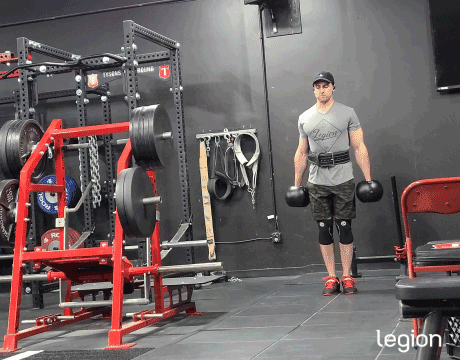
Why: The walking lunge is a dynamic alternative to the Bulgarian split squat that effectively trains all your lower-body muscles.
One advantage of walking lunges is that they allow you to move more naturally. Unlike Bulgarian split squat alternatives where your feet stay planted, you can adjust your stride length and foot placement to suit your build and mobility.
That makes them especially useful if Bulgarian split squats feel awkward or aggravate your knees.
The trade-off is that walking lunges can be more fatiguing and require more room than other alternatives, which might make them harder if you train in a small space (if you train at home, for example).
How to:
- Holding a dumbbell in each hand, stand up straight with both feet about shoulder-width apart.
- Step forward 2-to-3 feet with your right foot, then with most of your weight on your right foot, kneel down until your left knee touches the floor.
- Reverse the movement by pushing off the floor with your right foot, allowing your legs to straighten.
- Once you’re standing, bring your right foot back to the starting position.
Expert Tip: If you struggle with balance, pause briefly with your feet together between each step.
5. Step-up
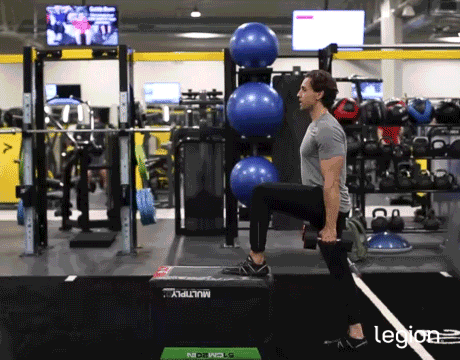
Why: The step-up is a great Bulgarian split squat alternative because it trains all the same muscles and is just as gentle on the joints. One reason it’s so joint-friendly is that you don’t need heavy weights to make it effective.
How to:
- Holding a dumbbell in each hand, place your right foot on a stable surface about knee-height off the floor.
- Keeping your weight on your right foot, fully straighten your right leg.
- Lower your left foot toward the floor, and return to the starting position.
- Once you’ve completed the desired number of reps, switch sides.
Expert Tip: Don’t use a step that’s too high—it can compromise your form and reduce the effectiveness of the exercise. Stick to knee height or lower until you can perform each rep with proper form.
READ MORE: Weighted Step-Ups Guide: How to Do Dumbbell Step-Ups
6. Curtsy Lunge
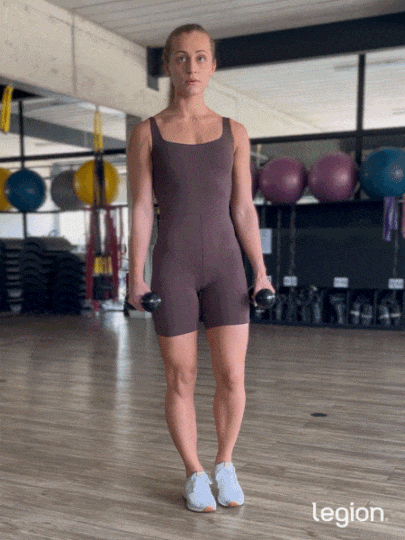
Why: The curtsy lunge is a solid Bulgarian split squat alternative for targeting your glutes. Because your leg crosses behind your body, it adds a slight rotational element that trains your butt from a different angle than most other lunge variations. This likely helps promote more balanced development and may improve hip stability, too.
How to:
- Holding a dumbbell in each hand, stand with your feet about hip-width apart.
- Step diagonally backward with your left leg so that it crosses your right leg.
- With most of the weight on the right leg, lower your body by bending both knees at the same time until the left knee touches the floor.
- Reverse the movement and return to standing position.
- Once you’ve completed the desired number of reps, switch sides and repeat the process.
Expert Tip: While the curtsy lunge can be effective, some find it aggravates their knees. If it causes discomfort, don’t try to push through it. Just choose a different exercise that feels better on your joints.
7. Single-Leg Box Squat
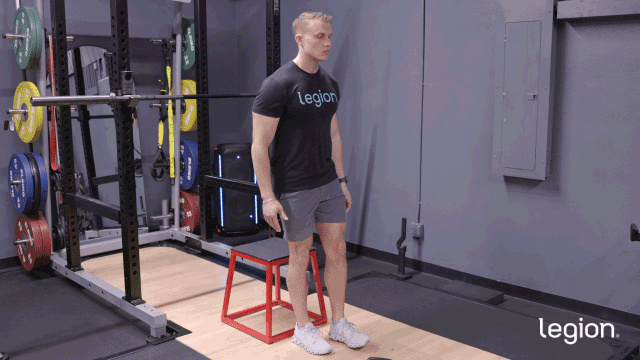
Why: If you’re looking for a Bulgarian split squat alternative because it bothers your knees, the single-leg box squat is a great option.
Research shows that box squats are highly effective for training your lower body. They’re also much easier on your knees because your shins stay more vertical and your knees don’t travel as far forward, which reduces stress on your joints.
How to:
- Stand with your heels almost touching a box, and place your feet a little narrower than shoulder-width apart with your toes pointing slightly
- Lift your left foot slightly off the floor, then sit down while keeping your back straight.
- Stand up and return to the starting position.
- Once you’ve performed the desired number of reps, switch legs and repeat the process.
Expert Tip: If bodyweight box squats are too easy, use a barbell to make them more challenging. Just bear in mind that barbell box squats are usually safer and more effective when you keep both feet on the floor and train both legs at the same time.
READ MORE: How to Do Box Squats: Form, Benefits & Alternatives
Do You Actually Need a Bulgarian Split Squat Alternative?
A lot of people start searching for a Bulgarian split squat alternative too soon—often because the exercise feels awkward or painful. But in many cases, a few simple adjustments are all it takes to make it more comfortable and effective.
Before swapping it out entirely, check your form first:
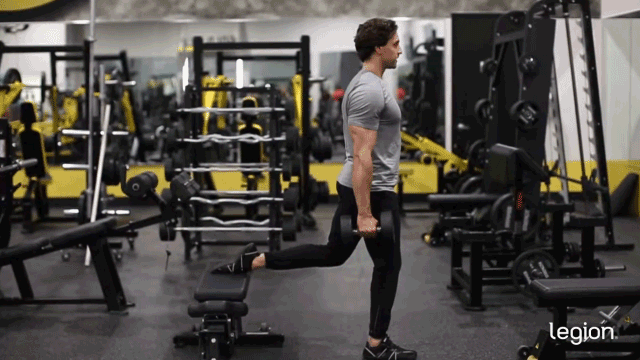
- Hold a dumbbell in each hand and stand 2-to-3 feet in front of a bench, with your back to it.
- Place your left foot on the bench behind you, keeping your right foot and heel firmly planted.
- Lower your body by bending your right knee, bringing your right thigh parallel to the floor.
- Stand back up and return to the starting position.
Common Mistakes to Avoid
If your form checks out, your setup might be the issue. Here are three common mistakes and how to fix them:
- Leaning too far forward: A slight forward lean is fine, especially if you’re targeting your glutes. But if your chest is collapsing over your front knee, you’re probably lifting too much. Lighten the load and focus on keeping your torso upright or only slightly forward—not folded over.
- Shifting your weight backward: Your body should move straight up and down over your front foot. But as the weight gets heavier, many people shift backward to let the rear leg do more of the work. This makes the movement easier but less effective. Keep your weight centered over your front foot and lower the load if needed.
- Letting your knees cave in: If your front knee caves inward as you lower yourself, it puts unnecessary strain on your knee joint and increases your injury risk. To fix it, imagine screwing your foot into the floor so your knee turns slightly outward. This cue also helps engage your glutes.
If you’ve corrected your form, dialed in your setup, and the Bulgarian split squat still feels wrong for your body, then it’s probably worth trying one of the alternatives listed above.
Supplements That Support Lower-Body Training
Bulgarian split squats and their alternatives can be highly effective—but also brutally fatiguing. If you want to recover faster, gain more muscle, and perform better each session, the right supplements can help.
Here are three worth considering:
- Protein powder: Protein powder, such as whey or casein, provides your body with the nutrients needed to build muscle tissue and recover from workouts. For a clean and delicious protein powder, try Whey+ or Casein+.
- Creatine: Creatine boosts muscle and strength gain, improves anaerobic endurance, and reduces muscle damage and soreness from your workouts. For a natural source of creatine, try our creatine monohydrate, creatine gummies, or Recharge.
- Pre-workout: A high-quality pre-workout enhances energy, mood, and focus, increases strength and endurance, and reduces fatigue. For a top-tier pre-workout containing clinically effective doses of 6 science-backed ingredients, try Pulse with caffeine or without.
(If you’d like even more specific advice about which supplements you should take to reach your health and fitness goals, take the Legion Supplement Finder Quiz, and in less than a minute, you’ll know exactly what supplements are right for you.)
FAQ #1: What’s the best Bulgarian split squat alternative for bad knees?
The step-up and single-leg box squat are typically the best options. Both train your lower body one leg at a time like the Bulgarian split squat, but they require much less knee bend, which makes them easier on your joints.
If the bodyweight versions of these exercises are too easy, you can gradually add weight—but do so slowly to ensure your body can tolerate the added load without discomfort.
READ MORE: 5 Safe Squat Alternatives for Bad Knees
FAQ #2: Why are Bulgarian split squats so hard?
Because you have to lift your entire body weight—plus any weight you’re carrying—with just one leg. They also demand balance, coordination, flexibility, and stability. And once you finish a set on one leg, you still have to go through the whole thing again on the other side.
FAQ #3: Do Bulgarian split squats work your hamstrings?
Not much. Bulgarian split squats primarily train your quads and glutes. While your hamstrings are involved to some degree—mainly to stabilize the hip and knee—you don’t use them enough to stimulate significant muscle growth.
If building bigger hamstrings is your goal, exercises like Romanian deadlifts and leg curls are better choices.
READ MORE: Do Squats Work Your Hamstrings? What Science Says
Scientific References +
- Liao, Kai-Fang , et al. Effects of Unilateral vs. Bilateral Resistance Training Interventions on Measures of Strength, Jump, Linear and Change of Direction Speed: A Systematic Review and Meta-Analysis. Mar. 2022, https://doi.org/10.5114/biolsport.2022.107024.
- Marchetti, Paulo H., et al. “Balance and Lower Limb Muscle Activation between In-Line and Traditional Lunge Exercises.” Journal of Human Kinetics, vol. 62, no. 1, 13 June 2018, pp. 15–22, content.sciendo.com/view/journals/hukin/62/1/article-p15.xml, https://doi.org/10.1515/hukin-2017-0174.
- Ebben, W., et al. “Muscle Activation during Lower Body Resistance Training.” International Journal of Sports Medicine, vol. 30, no. 01, 30 Oct. 2008, pp. 1–8, https://doi.org/10.1055/s-2008-1038785.
- Park, Sanghoon, et al. “Comparative Analysis of Lunge Techniques: Forward, Reverse, Walking Lunge.” ISBS – Conference Proceedings Archive, 6 Nov. 2016, ojs.ub.uni-konstanz.de/cpa/article/view/6941.
- Park, Samho, et al. “Comparative Study of the Biomechanical Factors in Range of Motion, Muscle Activity, and Vertical Ground Reaction Force between a Forward Lunge and Backward Lunge.” Physical Therapy Rehabilitation Science, vol. 10, no. 2, 30 June 2021, pp. 98–105, https://doi.org/10.14474/ptrs.2021.10.2.98. Accessed 11 June 2021.
- Simenz, Christopher J., et al. “Electromyographical Analysis of Lower Extremity Muscle Activation during Variations of the Loaded Step-up Exercise.” Journal of Strength and Conditioning Research, vol. 26, no. 12, Dec. 2012, pp. 3398–3405, https://doi.org/10.1519/jsc.0b013e3182472fad.
- Selseth, Angie, et al. “Quadriceps Concentric EMG Activity Is Greater than Eccentric EMG Activity during the Lateral Step-up Exercise.” Journal of Sport Rehabilitation, vol. 9, no. 2, May 2000, pp. 124–134, https://doi.org/10.1123/jsr.9.2.124.
- Costa, Bruna Daniella de Vasconcelos, et al. “Does Performing Different Resistance Exercises for the Same Muscle Group Induce Non-Homogeneous Hypertrophy?” International Journal of Sports Medicine, vol. 42, no. 09, 13 Jan. 2021, pp. 803–811, https://doi.org/10.1055/a-1308-3674.
- McBride, Jeffrey M, et al. “Comparison of Kinetic Variables and Muscle Activity during a Squat vs. a Box Squat.” Journal of Strength and Conditioning Research, vol. 24, no. 12, Dec. 2010, pp. 3195–3199, https://doi.org/10.1519/jsc.0b013e3181f6399a.
- Swinton, Paul A., et al. “A Biomechanical Comparison of the Traditional Squat, Powerlifting Squat, and Box Squat.” Journal of Strength and Conditioning Research, vol. 26, no. 7, July 2012, pp. 1805–1816, https://doi.org/10.1519/jsc.0b013e3182577067.
- Fry, Andrew C., et al. “Effect of Knee Position on Hip and Knee Torques during the Barbell Squat.” The Journal of Strength & Conditioning Research, vol. 17, no. 4, 1 Nov. 2003, pp. 629–633, journals.lww.com/nsca-jscr/Abstract/2003/11000/Effect_of_Knee_Position_on_Hip_and_Knee_Torques.1.aspx.
- Stokes, Tanner, et al. “Recent Perspectives Regarding the Role of Dietary Protein for the Promotion of Muscle Hypertrophy with Resistance Exercise Training.” Nutrients, vol. 10, no. 2, 7 Feb. 2018, p. 180, www.mdpi.com/2072-6643/10/2/180/pdf.
- Eckerson, Joan M., et al. “Effect of Creatine Phosphate Supplementation on Anaerobic Working Capacity and Body Weight after Two and Six Days of Loading in Men and Women.” The Journal of Strength and Conditioning Research, vol. 19, no. 4, 2005, p. 756, https://doi.org/10.1519/r-16924.1.
- Bassit, Reinaldo Abunasser, et al. “Effect of Short-Term Creatine Supplementation on Markers of Skeletal Muscle Damage after Strenuous Contractile Activity.” European Journal of Applied Physiology, vol. 108, no. 5, 3 Dec. 2009, pp. 945–955, https://doi.org/10.1007/s00421-009-1305-1.
